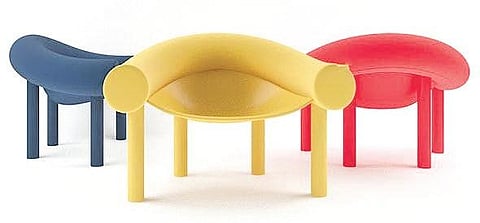

Blobby. Chubby. Zoomorphic. These are phenotypes that designers use to describe furniture and objects of neotenic design, another decor trend that seems to have garnered quite a following over the past few years. In this trend, chairs, coffee tables, couches and even lamps are showing their best voluminous curves, taking us back to childhood by giving our spaces a young, fun and modern look.
The term ‘neotenic design’ was coined by designer Justin Donnelly who co-founded Jumbo, along with architect Monling Lee. Neoteny is a scientific term used to describe the retention of juvenile features in adults. He named the phenomenon after noticing that many of the cute objects he admired had silhouettes and proportions associated with youth.
Neotenic design, therefore, exhibits evolutionary traits characterised by curiosity, playfulness, creativity and adaptability, seemingly reflective to the virtues of childhood and youth. Think of Disney characters, we find large heads, short limbs, and wide eyes cute and appealing—bright colours, squatter proportions, and rounder forms personify these attractions to furniture design.
Anthrophomising furniture and objects through child-like features have evolved, ranging from the capitalisation of comfortable balloon-like shapes and visually soft features, to undeveloped soft forms and comfortable pieces of design. The new comfort and warmth brought by neotenic design has drawn people into an era of soft forms and self-care.
“It is natural for us to seek comfort and escape the volatile era we currently live in; it is expressed through the objects we choose to create and interact with. Comfort and coziness fulfil our desire to take a break from rigidity and monotony of the environment we live in,” says interior designer Kavita Seth of Studio 29, adding, “Our emotional response to child-like forms and inherent comfort in fat furniture are now being analysed in different fields. Comfort from fat, round and warm furniture becomes relevant in the design industry towards the creation of products with higher levels of user satisfaction.”
Indeed, this design trend can be seen all over design magazines and felt through different design fairs over the past few years. Through child-like forms and softer structures, visual and physical comfort has seemed to take over angularity and rigidity.